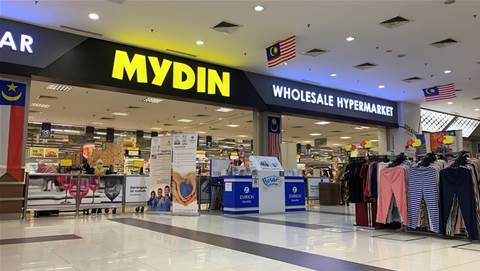Singapore’s largest public healthcare cluster, SingHealth is expanding the use of digital twin technology to deliver better care for patients through strengthening surveillance of disease outbreaks, redesigning workflow in healthcare facilities, and better healthcare facility planning.
The implementation of a “4 Dimensional Disease Outbreak Surveillance System” (4D-DOSS) aims to unlock different possible applications in healthcare settings in Singapore, including near real-time monitoring, analysis, prediction, and simulation of disease outbreaks and beyond. This follows the success of 3D-DOSS test projects that have been ongoing since 2020.
Digital twin technology uses advanced spatial mapping platforms and leverages existing healthcare data systems to develop a "living" digital replica or "twin" of a space or system.
These spatial systems can be beneficial for infectious disease surveillance as tracking these diseases within complex healthcare environments will require data to be represented in space and time.
SingHealth said the 4D-DOSS will integrate with data source systems such as clinical data and bed management systems (BMS) for better data representation.
SingHealth expects the new systems to be ready by July 2024.
With a network of acute hospitals, national specialty centres, polyclinics, and community hospitals offering over 40 clinical specialties, SingHealth delivers multi-disciplinary and integrated care across the country.
Prior to any such implementations, the healthcare cluster relied largely on manual extractions with 24 to 36-hour latency to process and analyse outbreaks in hospitals. It faced challenges to manually analyse spatial relationships, thus impacting further steps to track or control transmissible infectious diseases.
Pilot project
The cluster came up with the 3 Dimensional-DOSS Test Project for effective patient infectious disease surveillance involving the processing of multiple types of data such as patient symptoms, movement, locations, and results of relevant laboratory and radiological tests.
The 3D-DOSS integrated anonymised patient data was fed onto digital replicas of the Singapore General Hospital’s (SGH) physical spaces, enabling it to develop a number of applications, SingHealth said.
For instance, the 3D-DOSS system was able to detect an actual cluster of influenza patients, and a list of primary and secondary contacts with a Covid-positive worker.
In addition, it allowed for in-depth analysis exposing the areas of the hospital or patient cohorts at greater risk of transmission.
Through the digital twins of SGH, staff was able to visualise and assess disease spread across time and distance, detect infection clusters in test data, and predict the risk of future infection.
The system has helped them efficiently produce reports of exposed contacts – key information required for contact tracing efforts – to effectively identify possible infectious disease clusters.
SingHealth said this saved man-hours required for manual data collation, cleaning, and analysis of data.
Principal Investigator of the DOSS team and SGH's senior consultant Dr Indumathi Venkatachalam said, SingHealth is now expanding the use of digital twin technology building on the success of its 3D-DOSS project.
“The findings of the 3D-DOSS test projects are encouraging... With the model, we will be able to implement a system to alert and trigger infection prevention measures in a timely manner,” she added.
Future plans
SingHealth said it will further explore digital twin technology applications "beyond" disease surveillance.
For example, Changi General Hospital (CGH) is embarking on simulation modeling in a digital twin model to complement real-time situational monitoring at its Emergency Department.
"This could be used to forecast needs for staffing and resources in situations such as mass casualty scenarios, and can guide workflow redesign to meet evolving needs," SingHealth said.
Similarly, digital twin technology is also being used in the planning of healthcare facilities at the future Eastern General Hospital at Bedok North, where a digital replica of the planned hospital can incorporate building information modeling to enable accurate space planning.
CGH's Chief Data and Digital Officer, Chow Wei En, said the use of 4D-DOSS will allow "detailed infrastructure" and an automated patient-level data flow to the replica models.
"The inclusion of operational and clinical workflows can provide opportunities to develop clinical modeling and value-based care," he added.









